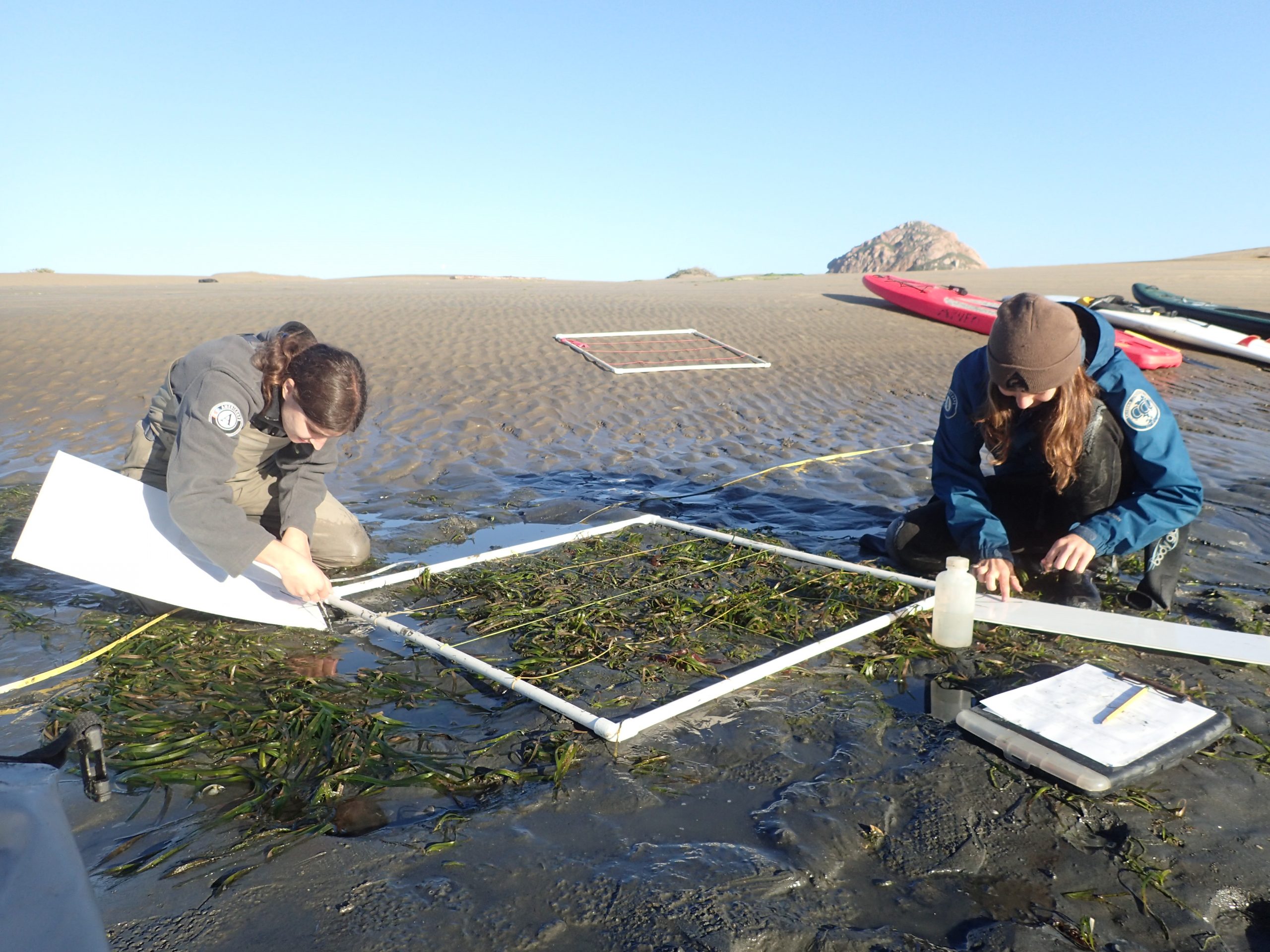
Does Morro Bay support healthy eelgrass beds?
Eelgrass Status in the Morro Bay Estuary
Eelgrass is a flowering plant that puts down roots in Morro Bay, where it serves many functions. Its overlapping roots help stabilize the bay floor and keep the waters clear. It puts oxygen into the water to support other wildlife. And its floating blades form an underwater meadow that provide shelter and a place to find food for the bay’s aquatic life.
The Estuary Program has mapped eelgrass and monitored bed health around the bay since the early 2000s.
A baywide map created in 2007 indicated 344 acres of eelgrass. Over the next five years, eelgrass acreage dwindled, with large stable beds all but disappearing from the mid and back bay areas. Our 2017 mapping effort indicated 13 acres of intertidal eelgrass. In the past two years, monitoring efforts showed patches of eelgrass in areas where it has not been present for several years. Although these new plants are not enough to increase the overall acreage significantly, they could indicate positive trends for eelgrass in the future.
Eelgrass Acreage: 2007 and 2017
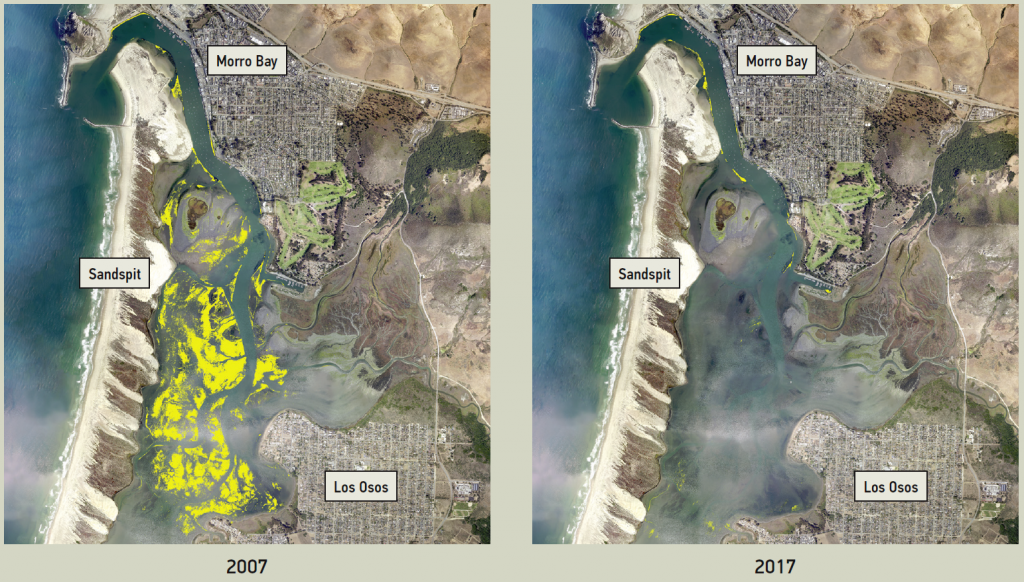
Eelgrass acreage (represented in yellow) has declined since 2007 when 344 acres were mapped. While beds toward the front bay and along the main channel have remained relatively stable, nearly all eelgrass was lost in the mid and back bay. Eelgrass loss has since stabilized, and the 2017 map shows small patches of eelgrass recurring in areas that suffered almost total loss.
Restoration Success
The Estuary Program has worked with partners including Cal Poly San Luis Obispo (Cal Poly), California Sea Grant, and countless volunteers to conduct experimental eelgrass restoration in the bay. Plants are harvested from the healthy beds toward the front of the bay, and then transplanted in the mid and back bay where eelgrass loss has been the most severe. This small-scale experimental restoration allows us to test out the timing, method, and locations for transplanting. We are learning a great deal from this work, and the success we’ve seen as a result supports expanding our restoration efforts in the future.
The Estuary Program conducted three years of small scale experimental eelgrass transplanting to learn more about the optimal methods, locations, and timing for restoration. These efforts have tested plantings at different times of the year, with different anchoring methods, a range of sites and depths, and multiple donor bed locations.
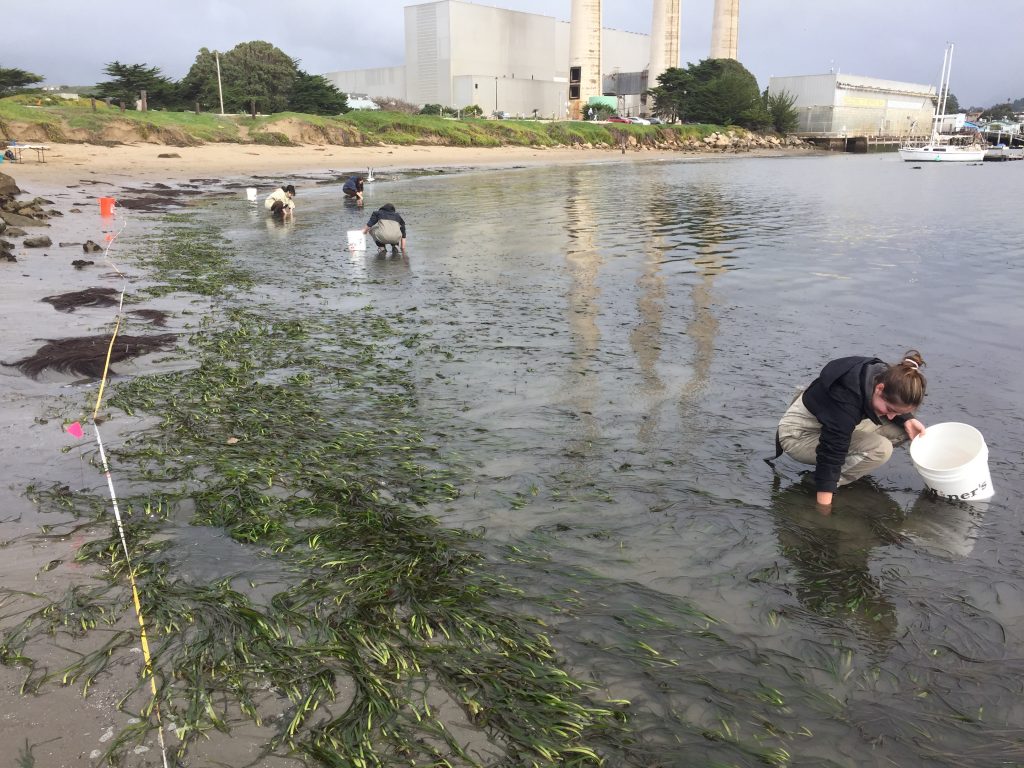
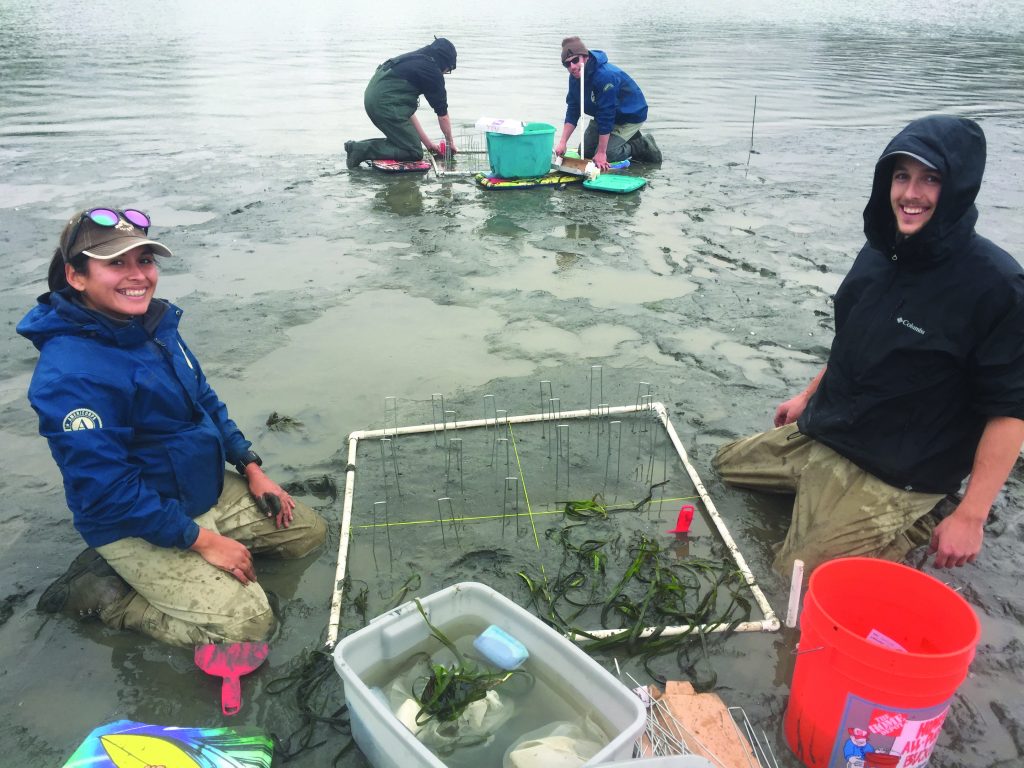
Next steps include expanding existing beds along the main channel, planting at subtidal locations (scuba), and planting further from the main channel (snorkel).
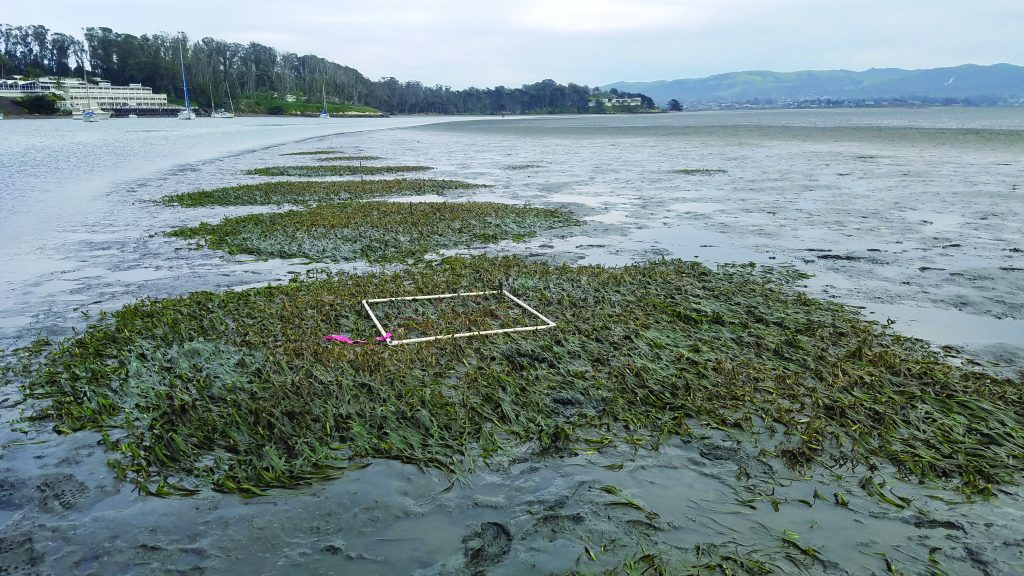
Cal Poly Research Efforts
To help understand the reasons for the eelgrass decline, Cal Poly and the Estuary Program, with support from California Sea Grant, are conducting a multi-year study of water circulation in the bay and how it may have changed over time. Changing conditions such as shallower, more turbid waters, for example, could be having negative impacts on eelgrass. The results of this research, expected in 2020, will help guide our future restoration efforts and other projects that could potentially tip the balance in favor of eelgrass. The photos on this page show members of the Cal Poly project team at work, including undergraduate students Sydney Wewerka and Edwin Rainville, Senior Research Scientist Ian Robbins, and Physics Professor Ryan Walter.
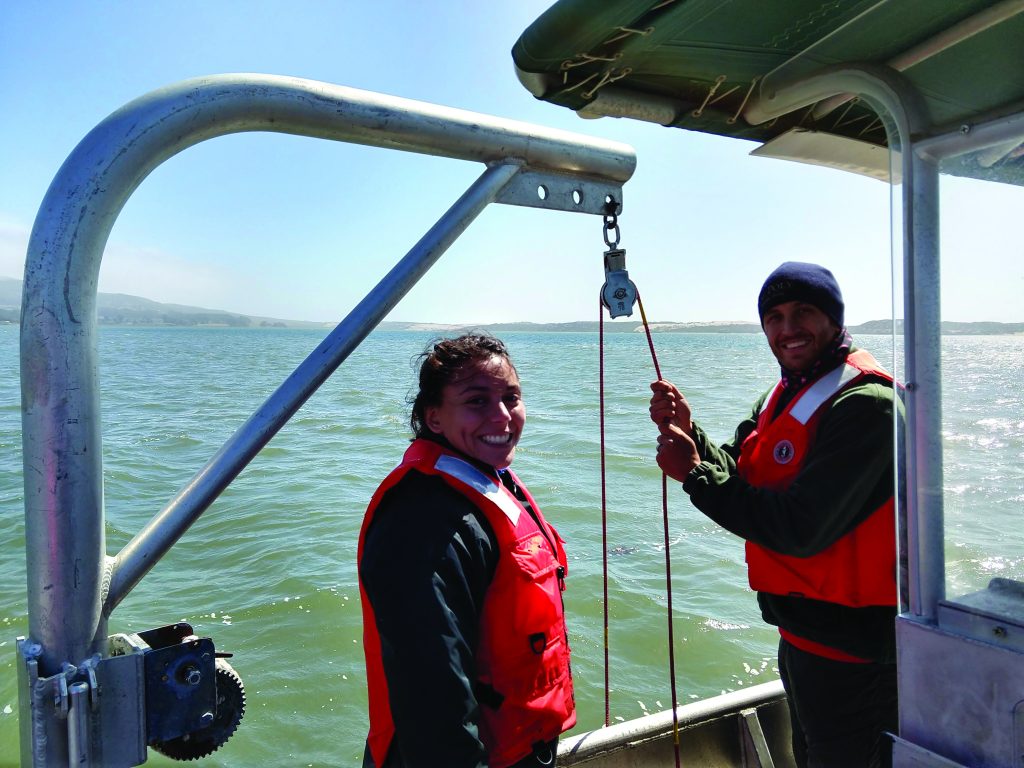
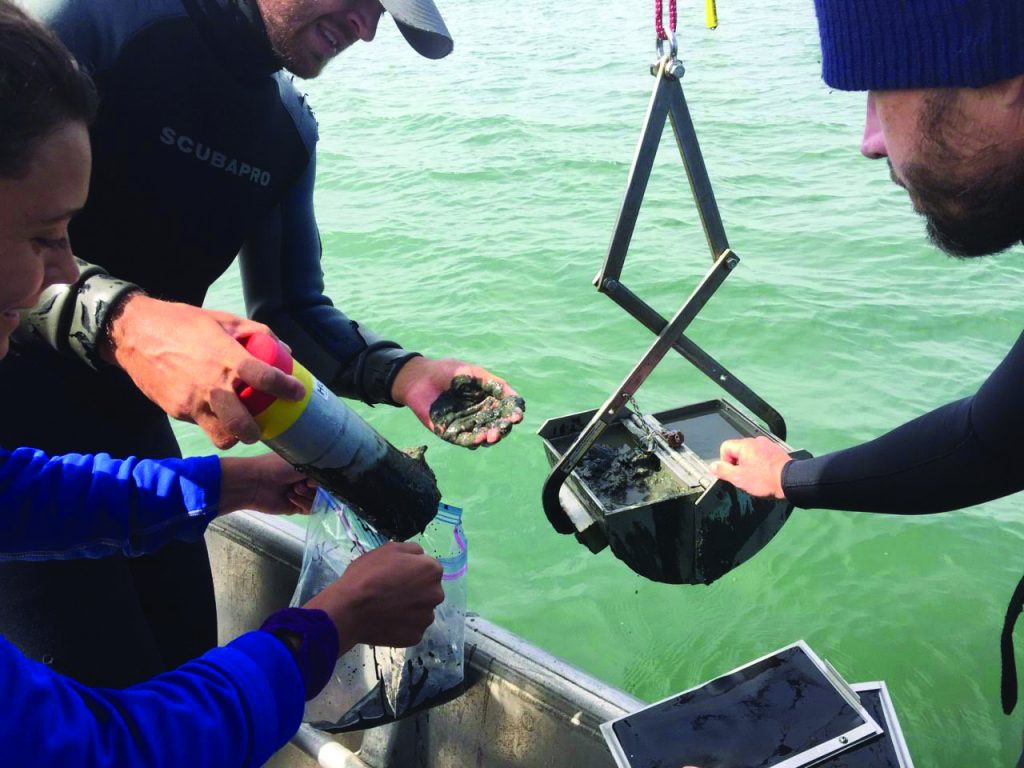
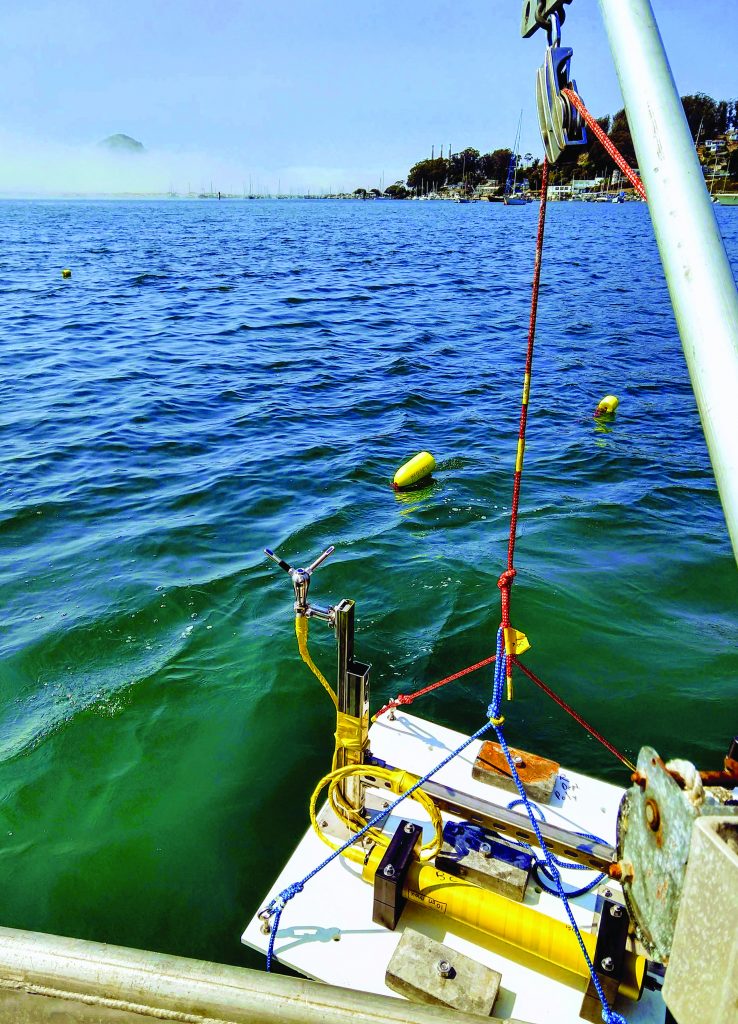
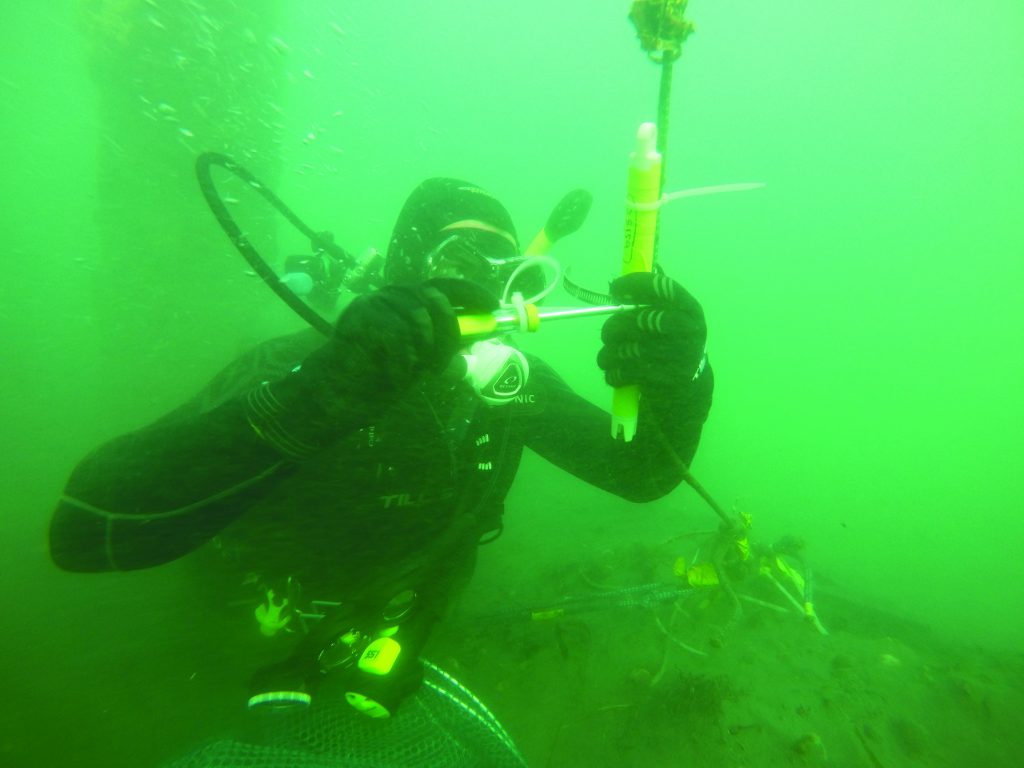
Cuesta College Research Efforts
Cuesta College, with support from the Estuary Program, embarked on a research effort to study Labyrinthula spp., which is the slime mold that can lead to wasting disease. At other estuaries around the country, wasting disease has been responsible for widespread eelgrass declines. Cuesta professors Laurie McConnico and Silvio Favoreto wanted to better understand the prevalence of this disease and how it impacts eelgrass.
The Estuary Program awarded funding to the two professors to purchase reagents and equipment and to pay the course registration fees for students volunteering in the lab. The project involved the Cuesta faculty and students collecting eelgrass blades with and without signs of necrosis (dark areas on the blades) throughout Morro Bay and using this material for the isolation of strains of Labyrinthula spp., resulting in 18 isolates cryopreserved in liquid nitrogen. During the summer of 2018, they collected eelgrass from four sites (Coleman Park, Windy Cove, Mid Bay, and Back Bay) and in summer 2019 they collected from three sites (Coleman Park, Windy Cove, and Back Bay). The blades were used to quantify necrotic tissue and an Excess Green Index was created, to represent the health of the eelgrass based on its color. All samples were collected and initially processed by students participating in a summer environmental microbiology course. Preliminary data analysis indicates Labyrinthula spp. is found at all sample locations within the estuary, and in both green and necrotic eelgrass tissue.
The researchers’ efforts will include sampling in 2020.


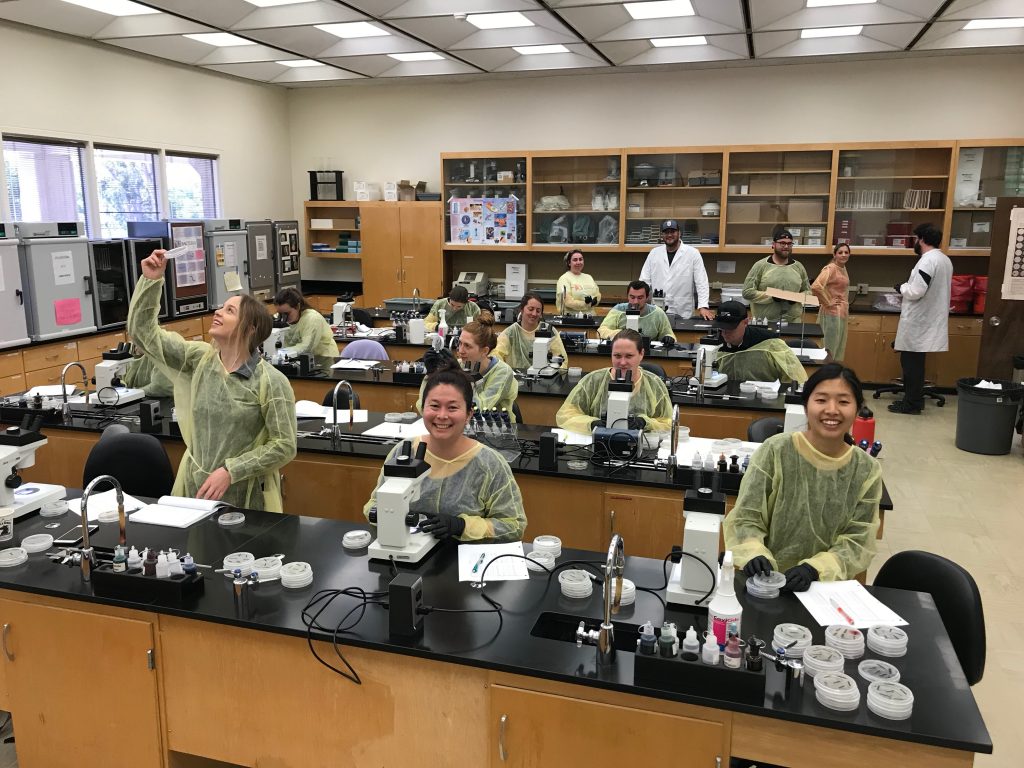
Video Presentation: How Healthy is Morro Bay's Eelgrass?
See how eelgrass in Morro Bay is doing today and learn what the Morro Bay National Estuary Program, researchers at California Polytechnic University San Luis Obispo, and other partners are doing to help bring back this essential aquatic grass.
Data Notes
The eelgrass maps from 2007 and 2017 were created using multi-spectral imagery collected in the fall by Ocean Imaging, Inc. The eelgrass map was created using an automated classification scheme and was groundtruthed by Estuary Program staff.
